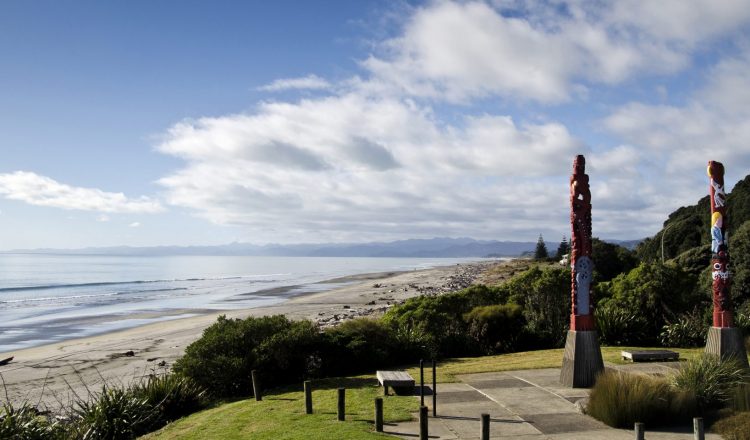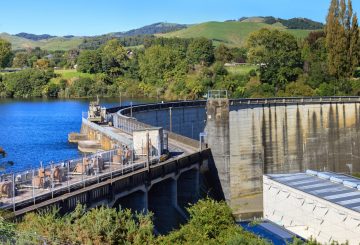Ōpōtiki là một thị trấn nhỏ ở phía đông vịnh Plenty ở đảo Bắc của New Zealand. Nó được đặt theo tên a spring found on the eastern bluff above Waiotahe Beach called ‘O-Potiki Mai-tawhiti’. Mùa xuân được đặt tên do một trưởng Tarawa và anh trai của ông đã lên thuyền đi New Zealand trong một xuồng tên là Te Srautauta, đi kèm với hai con vật nuôi cá Tanahanaha biết là O-potiki-mai Tawhiti, nghĩa là “hai con vật nuôi từ xa”. Ông đặt những con cá này vào mùa xuân này.
Những cư dân được ghi nhận sớm nhất tại Opotiki là các bộ lạc Tini-o-toi và Tini-o-awa mọc ra từ thời kỳ định cư Toi của thế kỷ 12.
Trước người châu Âu, Opotiki là một ngôi làng lớn và là một trung tâm Maori nổi tiếng. Tuy nhiên, vào năm 1769, người Maori địa phương lần đầu tiên tiếp xúc với người châu Âu khi thuyền trưởng James Cook đi ngang qua bờ biển Vịnh Plenty. Do đó nhiều thương nhân châu Âu và Mỹ bắt đầu đến thăm khu vực này.
Trong thập niên 1820 có một thời gian dài các cuộc xâm lược vũ trang của quân đội Ngapuhi từ Northland. Quân Opotiki đông hơn và không có nhiều vũ khí tiên tiến như vậy phải rút lui từ bờ biển về nội thất rừng gồ ghề.
Trong những năm 1830 và 1840 đã có nhiều thời gian hòa bình hơn và trong thời gian này các bộ lạc đã có thể bắt đầu phục hồi đến bờ biển và có thể tận dụng tối đa tất cả các cơ hội giao dịch tìm thấy ở đó. Trong thời gian này các nhà truyền giáo Kitô giáo Maori bắt đầu đến được Opotiki. Sau đó vào năm 1840 Hiệp ước Waitangi được ký kết, trong đó thiết lập chủ quyền của Anh. Các nhà truyền giáo Pháp bắt đầu di chuyển trong khu vực Pa Kowhai, đó là những gì đã được Opotiki được biết đến như vào thời điểm này.
Trong thập niên 1850 và đầu thập niên 1860 có nhiều sự phát triển hơn và người Maori bắt đầu áp dụng các phương pháp nông nghiệp và cây trồng của châu Âu, như lúa mì, lợn và đào. Họ giao dịch những thứ này với Auckland.
Năm 1963 cuộc xâm lược của Waikato xảy ra. Đó là sự kiện lớn nhất của các cuộc chiến tranh New Zealand thế kỷ 19. Đó là giữa các lực lượng quân sự của chính quyền thực dân và một liên bang của các bộ lạc Maori được gọi là Phong trào Kingitanga. Nó kéo dài trong 9 tháng và tình cờ đè bẹp quyền lực Kingit, vốn là mối đe dọa đối với Chính quyền Anh. Nó dẫn đến việc Whakatōhea iwi cho vay sự hỗ trợ của họ cho các lực lượng chống Anh, từ đó dẫn đến Opotiki của lực lượng Anh vào năm 1865.
Cuối cùng đào đến huyện, tuy nhiên phần lớn đất đai đã bị người định cư Anh chiếm lấy và được làm thành các khu vực chăn nuôi cừu và gia súc. Vì diện tích nhỏ của vùng nội địa có thể canh tác và vì lối vào cảng rất nguy hiểm, hy vọng thị trấn Opotiki trở thành một trung tâm lớn của Vịnh Plenty đã nhanh chóng bị nghiền nát.
Đã có những trận lũ lớn trong những năm 1950 và 60 dẫn đến thị trấn giới thiệu các mương là các ngân hàng ngăn chặn đã thành công ngăn chặn thiệt hại từ lũ lụt sau đó. Có một sự bùng nổ kiwifruit vào cuối thế kỷ XX mà thương hiệu hậu thế lớn cho khu vực này. Bây giờ nuôi trai là dự án lớn tiếp theo để giúp phát triển thị trấn, cũng như cưỡi xe đạp trong con đường mòn Motu mang khách du lịch.


















































